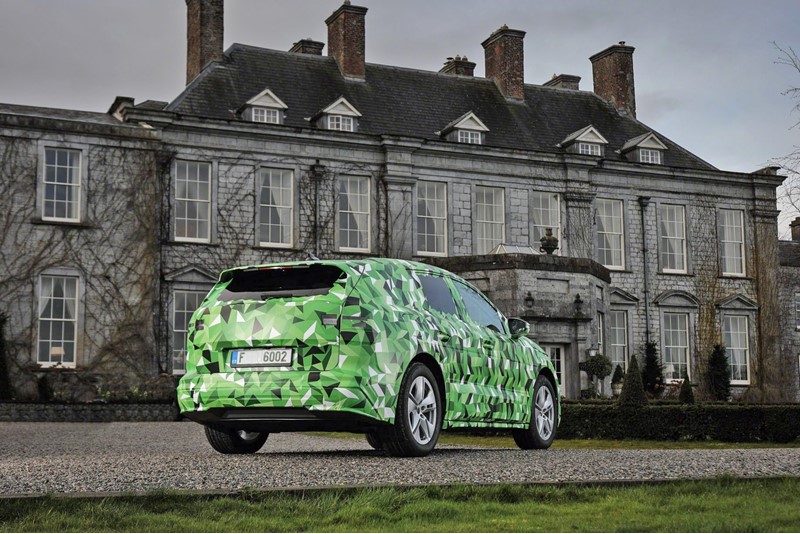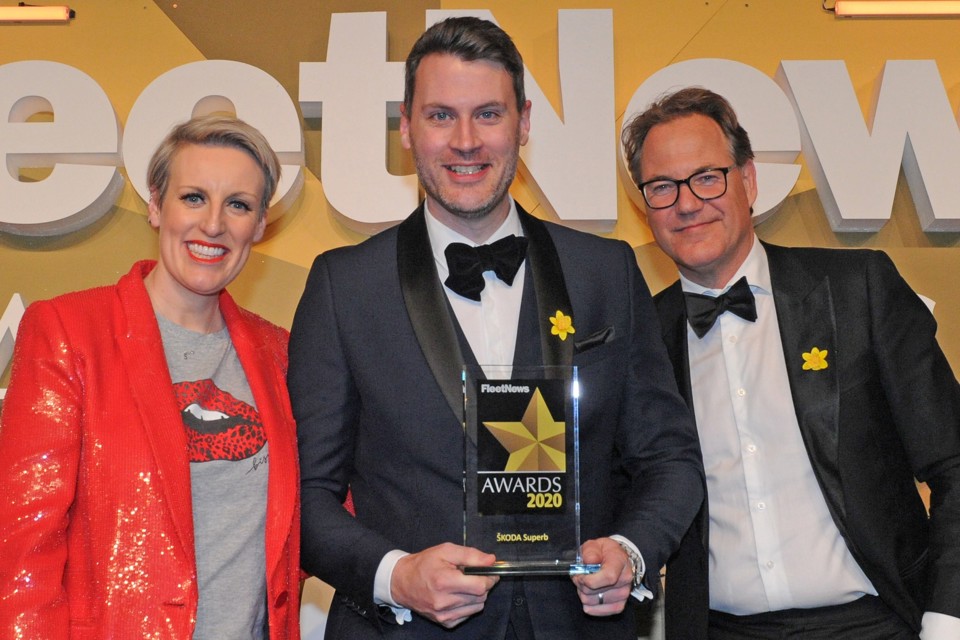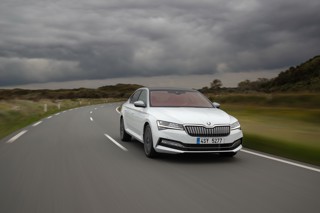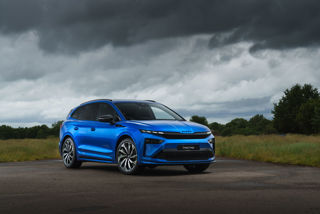When Fleet News caught up with Škoda’s head of fleet Henry Williams earlier this year the brand had recently launched its first plug-in hybrid electric vehicle (PHEV), the Superb iV, a car which he described as “critical to our true fleet performance”.
He was keen to demonstrate the Superb iV’s 30-plus-mile pure electric range and we went for a drive in the top spec L&K near the Volkswagen Group UK head office in Milton Keynes.
Since then, the Covid-19 pandemic has made doing an interview in that manner impossible.
It has thrown manufacturers’ 2020 plans into disarray with countries in lockdown, factories closed for weeks and profits tumbling.
The Volkswagen Group experienced revenue falls of more than 8% (£4.3 billion) from January to March, while operating profit dropped by 81.4% (£3.4bn).
Škoda sold 13.7% fewer cars globally during that period, with Volkswagen suffering a 16% decline, Audi 12% and Seat 20.6%. In the UK, Škoda’s true fleet sales (leasing and fleet other) fell by 30.3% versus Q1 2019 (from 7,939 to 5,531)
However, factories have since reopened, with safety precautions in place to protect staff (Škoda’s three Czech plants reopened on April 27), and Williams says that Škoda has increased its true fleet market share from 4.1% to 4.5% YTD April, despite the challenges.
He adds that the Superb order take has been “good”.
“Understandably, the Covid-19 lockdown will have an impact but order take (for the Superb) has been in line with our plan,” he says.
That plan means 50% of the Superb’s true fleet sales are plug-in hybrids.
It’s a reflection of the fleet market’s appetite for electric vehicles (EVs) and the pricing strategy Škoda has adopted.
“The traditional manufacturer model of pricing a car is to look at the retail price versus competitors and then you may adjust the price dependent on equipment,” Williams says.
“We haven’t done that with this car, it’s more based on wholelife cost to get as much equivalency to petrol and diesel options of Superb as we can.
“We also offer it on many trim levels to cater for user choosers and job-need drivers who have a set budget and need specific levels of equipment.”
Drivers can choose between SE Technology (the most popular fleet choice), SE L, SportLine Plus and L&K, with P11D values starting at £33,535 for the hatch. That’s £1,035 more than the 2.0 TDI 190 SE L auto (£32,500) and £545 more than the 1.5 TSI 150PS SportLine Plus auto (£32,990).
For benefit-in-kind (BIK) tax there is a £3,146 annual saving versus the petrol (£1,341 versus £4,487) and a £3,339 saving versus the diesel (£4,680) for a 40% taxpayer.
Williams says this makes it a “no-brainer for a company car driver” and gives the fleet manager “a much better reasoning for bringing grey fleet drivers back into the governance of the company car fleet”.
It would be logical for him to adopt the same wholelife cost pricing strategy with the new Octavia plug-in hybrid and mild hybrid. However, this is unconfirmed and pricing will not be announced until the summer, with orders open shortly after that, having been pushed back slightly due to the temporary halt in production.
Williams expects the PHEV to be “a really important part of the mix” and could take a 50% share of true fleet sales, like the Superb iV.
A VRS version will also be also available and is likely to take a 20% share due to its popularity with blue-light fleets.

The brand’s first pure electric SUV, the Enyaq iV (pictured), will be unveiled this autumn (having been originally pencilled in for mid-year).
Fleet News: What can fleet operators expect from the Enyaq?
Henry Williams: It’s a very practical car but very stylised so it’s a whole new design era for Škoda. We don’t want to create a car which isn’t going to work for your family or your lifestyle. It’s got to be almost no compromise to move to electric cars because we want mass adoption. It’s going to be a real game changer from what people see today.
FN: What is your EV charging proposition?
HW: There’s a lot of investment going into infrastructure and that’s really important. But our view is that most charging is going to happen at home or at destination because once you’ve got a range on an electric vehicle of more than 250 miles it’s rare that you’re going to need to charge en route unless you are a very high mileage driver. It’s a shift in mindset for drivers.
I’m not sure people really appreciate what a convenience it is to have 250-300 miles of range in your car from when you leave home in the morning, every morning. It’s not ‘oh I’ve got to go to the petrol station on my way to my first appointment because I haven’t got enough fuel to get there’.
And if you’re doing a 400-mile day where you might need to top-up there are rapid chargers available, and more will become available. But that is still going to be a rarity for most drivers.
FN: Some fleet operators are targeting a zero-emission fleet by 2030. How do they achieve it?
HW: It’s chicken and egg. Manufacturers are investing heavily into it and most will be launching electric vehicles within the next year. Across the group we are going to launch 75 fully electric cars in the next nine years and the investment into that is staggering, €33bn (£29bn). That comes with our determination to be net zero CO2 emissions by 2040, in alignment with the Paris Accord. We understand that is the future and we have set our business up to deliver it. The market is going to take off for hybrids and electric cars, not just in fleet but overall, so we’re looking at 25% of Škoda’s mix by 2025.
FN: How are you supporting fleets during the coronavirus lockdown and beyond?
HW: We remain in constant contact with customers to understand their position and how we can help. We are working with them on vehicle supply as well as providing access to repairs through our retail network to help keep key workers on the road.
For our emergency services customers who are on the frontline of the pandemic, we are working hard to ensure we can support where they need at this crucial time. This has included the supply of additional vehicles from our own fleet and, alongside our logistics providers, we are continuing to convert and deliver new vehicles that are needed to support the increased demand. We are also putting new processes in place to ensure supply of parts, and are continuing to take new orders and working with convertors to get them processed safely and without delay.
FN: When the restrictions are lifted, how soon will deliveries be made?
HW: The brand is evaluating all of its operations as the global situation develops. We are still making every effort to deliver vehicles on time and we are identifying any delays at the earliest opportunity to keep our customers updated.
FN: How are you supporting your retail network during the coronavirus lockdown and beyond?
HW: The safety of our colleagues and customers is top priority.
We follow the guidance set out by the Government and the advice from the World Health Organisation and are in constant contact with our retailer network.
Our retailers are available for customers to contact by phone and email for support and enquiries and many of our retailer colleagues are still carrying out urgent vehicle maintenance.
FN: You launched your Škoda Business Centres last year. How many dealers have signed up?
HW: We’re at 30 now out of 120 so, basically, a quarter of the network which is really good. It was quite a big transition for our dealer network.
We previously had some dealers who were selling through a local business development manager in their dealerships, some dealers who were selling to leasing companies and major corporates, some who were doing both and a lot of the network not doing any of that.
The Škoda Business Centres bring the experts looking after local business and major corporates and leasing companies together in one place.
We put a programme of support in to help them and gave them the tools to be able to do that. They had to apply to upgrade their business to become a Škoda Business Centre so put more resource in, put more infrastructure in and sign-up to some pretty strong terms and conditions from us about the way they manage their business and how they look after customers.
FN: Tell us more about your new aftersales programme.
HW: We revised it in June last year and it’s focused on customer satisfaction for leasing companies and end-users.
We’ve introduced some terms and conditions that our dealer network will adhere to such as an average 30-minute booking response time, we will pick up and drop off your car if it’s within a 30-minute drive and a leasing company will never pay more than £64.90 per hour for labour (excluding VAT).
It just adds to what we’re trying to do, which is put the customer at the heart of everything we do.

Williams preferred not to comment on how much of a decline in fleet sales the brand is forecasting this year as a result of the Covid-19 pandemic, saying simply that the situation is “constantly evolving” and “we are reviewing the forecast for the year on a regular basis”.
However, having achieved his aim of securing 1,000 fleet customers by the end of last year (up from 150 when Williams joined the brand as national fleet sales manager in 2013), his next goal is greater penetration of those fleets.
That will be achieved through new product, although the Superb and Octavia still take the lion’s share (around 70% of true fleet sales), and greater engagement.
To that end, Škoda launched a customer forum last year, bringing together 30-40 of its biggest customers to discuss industry issues and future strategy.
“It’s a great opportunity to learn from customers and listen to what they want from us,” Williams says.
Customer feedback will become even more important as fleets and manufacturers adapt to the coronavirus situation. What form that feedback has to take – whether ‘virtually’ or face-to-face – remains to be seen.





















Login to comment
Comments
No comments have been made yet.